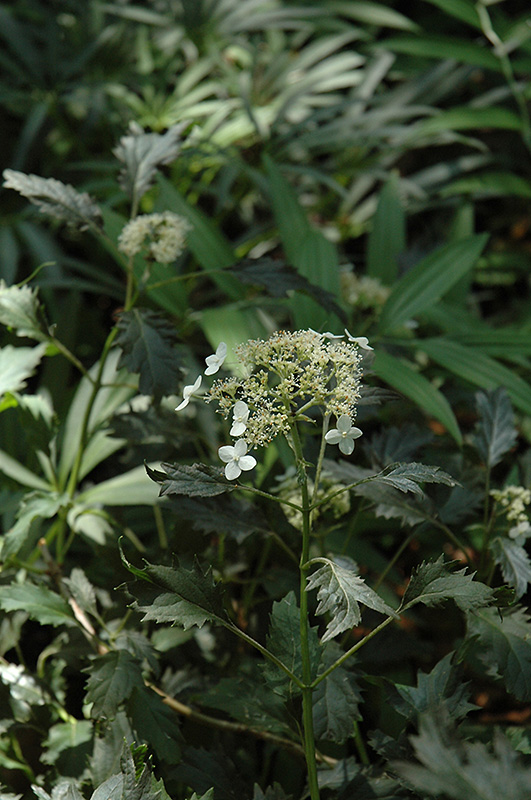Plant Finder
Emerald Lace Hydrangea*
Hydrangea arborescens 'Emerald Lace'
* This is a "special order" plant - contact store for details
Height: 4 feet
Spread: 5 feet
Sunlight:
![]()
![]()
Hardiness Zone: 4a
Description:
This elegant selection features white lacecap blooms in mid summer, lasting for a very long time; foliage is unlike any other, it is deeply lobed in an irregular way, giving an airy look; after late winter pruning it blooms on new growth
Ornamental Features
Emerald Lace Hydrangea features bold white lacecap flowers at the ends of the branches from early to late summer. The flowers are excellent for cutting. It has forest green deciduous foliage. The lobed leaves do not develop any appreciable fall color.
Landscape Attributes
Emerald Lace Hydrangea is a multi-stemmed deciduous shrub with a more or less rounded form. Its relatively coarse texture can be used to stand it apart from other landscape plants with finer foliage.
This shrub will require occasional maintenance and upkeep, and is best pruned in late winter once the threat of extreme cold has passed. It has no significant negative characteristics.
Emerald Lace Hydrangea is recommended for the following landscape applications;
- Mass Planting
- General Garden Use
- Naturalizing And Woodland Gardens
Planting & Growing
Emerald Lace Hydrangea will grow to be about 4 feet tall at maturity, with a spread of 5 feet. It tends to be a little leggy, with a typical clearance of 1 foot from the ground. It grows at a fast rate, and under ideal conditions can be expected to live for approximately 20 years.
This shrub does best in full sun to partial shade. You may want to keep it away from hot, dry locations that receive direct afternoon sun or which get reflected sunlight, such as against the south side of a white wall. It does best in average to evenly moist conditions, but will not tolerate standing water. It is not particular as to soil type or pH. It is highly tolerant of urban pollution and will even thrive in inner city environments. Consider applying a thick mulch around the root zone in winter to protect it in exposed locations or colder microclimates. This is a selection of a native North American species.
* This is a "special order" plant - contact store for details
